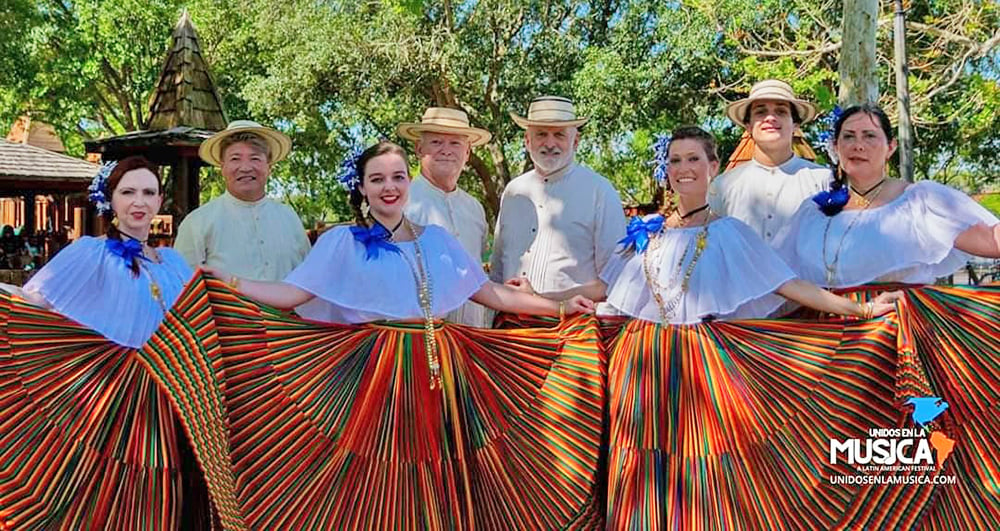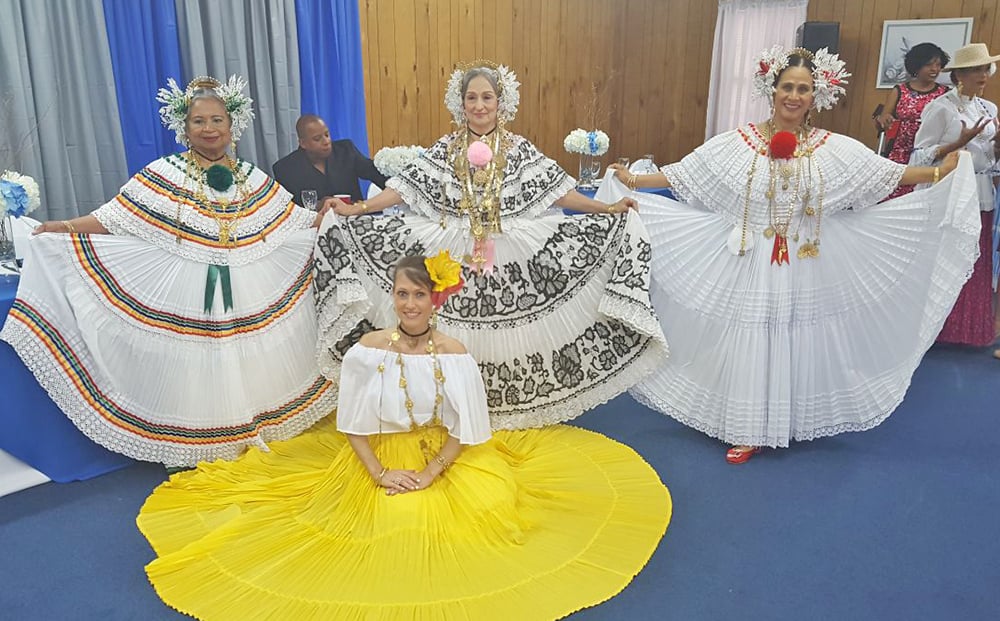Jessica Serrano, Regency Centers Records Clerk in Jacksonville, has always loved any kind of dance. As a child through her teenage years she took ballet classes, and then began dancing in a Venezuelan Joropo group with her husband. Her latest hobby? Panamanian folkloric dance. She's part of a group who has learned 22 different choreographies that are mostly danced by pairs in circles or straight lines. Continue reading to learn about Serrano's unique interest.
 Jessica Serano (third female from left)
Jessica Serano (third female from left)
RC: How long have you been doing Panamanian folkloric dance?
JS: Two years.
RC: How did you get into this style of dance? Did you grow up a dancer?
JS: Viva Panama USA came to perform at the library I was working at about two years ago, and I was instantly taken with the beauty of this style of dance, costumes, and music. I expressed to the director how much I loved it, and she invited me to one of the practices. I went, and not only was the dancing beautiful, but the people in the group had the warmest hearts and most sincere personalities. I joined as soon as I could! I’ve always loved any kind of dance, taking ballet as a child and teenager, and then dancing in a Venezuelan Joropo group with my husband for a while, so this was just up my alley.
 Serrano and Viva-Panama USA performing at a recent event
Serrano and Viva-Panama USA performing at a recent event
RC: Tell us about the group, Viva-Panama USA, that you dance with.
JS: Viva-Panama USA is a non-profit organization which has branches all across the U.S. some with the same name, and some with a different one. Every year or so, they all meet up in a designated city for an “Encuentro” or meeting where they have different workshops and contests. This is to better the group by learning fresh choreography and seeing what other groups are doing. The main purpose of the group is to preserve the music and traditions, and folklore of Panama. Although a few people in the group are not Panamanian, such as myself, we are all cultural ambassadors.
RC: Where have you performed most recently?
JS: We dance at cultural festivals such as World of Nations Celebration, Latin American Festival in St. Augustine, school and church cultural festivals, libraries, Hispanic American Clubs (Palm Coast), Flagler College, weddings and quinceañeras. Our most recent big performance was at the Latin American Festival in St. Augustine and the most recent small performance was at a wedding.
RC: How long do the dances last and are they choreographed?
JS: Each dance is about three-to-four minutes long. In a typical performance, we do four or five dances, so about 15-20 minutes of actual dancing, usually followed by a fashion show where the audience learns about the history of the traditional costumes and jewelry we wear. In all, we have about 22 different choreographies at this moment, mostly danced by pairs in circles or straight lines. To name a few: Cumbia, Mejorana, Tambor, Punto, Denesa. Panamanian dances also have a very unique feature, “La Saloma,” which is a kind of yelling, originally done by the country people communicating over long distances. So while the dancers dance, they are also yelling which kind of sounds like a mix between a bark and yodel. This makes the dance vibrant and energetic. You can see an example of the dance, costumes and salomas by going to Youtube and typing in “Panamanian Típico Dance.”
 Serrano (left) after a recent performance in Downtown Jacksonville
Serrano (left) after a recent performance in Downtown Jacksonville
RC: What is the most gratifying part about your involvement with the group?
JS: Seeing the audience enjoying themselves — most having never seen this kind of dance before. I also love some of our dances when we actually go out and grab people from the audience to dance with us.
FUN FACT: Serrano has many different costumes ranging from the very fancy “Pollera” with elaborate hair pieces and a lot of gold chains, to the more simple country-style uniform which is a skirt, blouse, one or two gold chains, and a flower in the hair. All the skirts she wears are very long and double circled. The head ornaments for the ladies mostly consist of intricate beads called “tembleques” and gold combs. The men wear the Panamanian hats and sandals.
